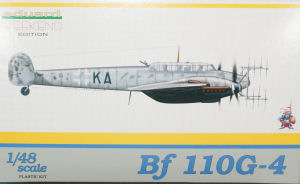
Eduard 1/48 Messerschmitt Bf 110G-4 Weekend Kit First Look
By Michael Benolkin
| Date of Review | May 2010 | Manufacturer | Eduard |
|---|---|---|---|
| Subject | Messerschmitt Bf 110G-4 Weekend | Scale | 1/48 |
| Kit Number | 8404 | Primary Media | Styrene |
| Pros | Very nicely detailed kit | Cons | Nothing noted |
| Skill Level | Experienced | MSRP (USD) | $39.95 |
First Look
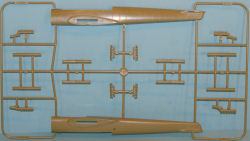 |
 |
 |
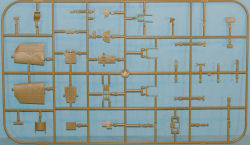 |
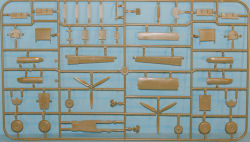 |
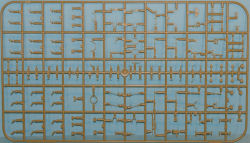 |
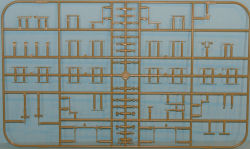 |
 |
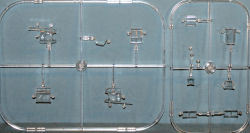 |
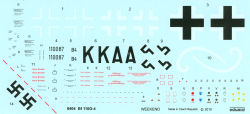 |
The twin-engined Messerschmitt design was a result of an RLM requirement for a strategic fighter. Three bids were submitted, Focke Wulf, Henschel, and Bayerische Flugzeugwerke (where Willy Messerschmitt worked at that time). Many folks get confused about the proper designations of these early Messerschmitt designs. During the development of the Bf 108 Taifun, Bf 109 series, and Bf 110 Zerstorer, Willy Messerschmitt was still a staff member at Bayerische Flugzeugwerke, hence the prefix Bf on the design numbers. It was due to his significant contributions to the RLM that Bayerische Flugzeugwerke was renamed Messerschmitt AG in 1938 and Willy Messerschmitt appointed chairman and managing director of his namesake company. Development of the Zerstorer design predated the birth of Messerschmitt AG.
Interestingly enough, the original submission for the strategic fighter was rejected by the RLM and funding was given to Henschel and Focke Wulf. It wasn't until the intervention of WWI ace Ernst Udet that the Messerschmitt design was reconsidered, the requirements reworked, and the two competitors' contracts terminated.
In initial flight testing, the Bf 110 was faster than the early Bf 109, though not as maneuverable. Engine development problems with the Daimler Benz model 600 engines would force the intial batches of Bf 110s to be powered by the less-capable Jumo 210 engines. When the DB601 engines became available, the Bf 110 would become the long-range fighter, night fighter, and fighter-bomber that made it lengendary.
Eduard has re-released its Bf 110G-4 in a 'Weekend' edition which translates to fewer parts, no photo-etch, one decal option, and a lower retail price. The difference between this kit and the Profipak release is that the latter has the sprue with the external tanks, the color-printed photo-etch, and the larger decal sheet with five markings options. If you look at this kit in contrast to their earlier Bf110E, you can see that most of these sprues are new-tool ( look here).
This kit represents the Bf 110G-4 night-fighter (nachtjäger) variant and is presented on eight parts trees molded in RLM02 colored styrene plus two trees of clear parts. Also included in this kit is one set of paint masks, and a set of decals.
The cockpit is the usual outstanding job from Eduard. Even without color-printed photo-etch, there are lots of details nicely rendered in both the front and rear cockpits and those twin upward-firing cannons are really going to look impressive under glass. With a little attention to detail, some good painting and weathering, and a few good references, you will have a nice looking cockpit to view.
Behind the front cockpit bulkhead are mounted a variety of radio equipment which took up lots of space in those days. To the rear of the back seater are racks of spare ammo cans for the flex-mounted rearward firing machine guns.
The ailerons are separately molded which the rudders, elevators and flaps are molded in position.
You'll note all of the canopy parts provided in this kit. You have the option of posing the front and rear cockpits closed up, either (or both) open, and two different types of rear canopy for whether the aircraft is armed with the rearward firing gun or not. The instructions show you which parts to use for this variant.
This weekend release doesn't provide the extended-range drop tanks (they are provided in the Profipak release).
Where you'll need some patience and dexterity is in the assembly of the rather intricate dipole radar antenna array on the nose. Each antenna element is a separate part that mounts to the port and starboard frames, which in turn mounts to three struts on each side of the nose. The antenna array should be sturdy once all the parts are assembled, but patience and liquid cement are both recommended here.
Markings are provided for one aircraft:
- Bf 110G-4, W.Nr. 110087, 4./NJG 3, B4+KA, Norway, 1945
The sheet also includes a nice set of maintenance stencils for the airframe.
Eduard has another hit on its hands and I don't doubt that this will be a big seller. This weekend kit has an suggested retail price of $40, whereas the Profipack retails at $65. You have a choice when it comes to detail versus value, and both come from Eduard.
My sincere thanks to Eduard for this review sample!







